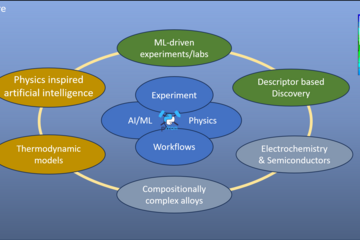All genres
11301.
Thesis - PhD
Towards On-Site Production of Hydrogen Peroxide with Gold-Palladium catalysts in Electrocatalysis and Heterogeneous Catalysis. Dissertation, Ruhr-Universität Bochum, Bochum, Germany (2017)
11302.
Thesis - PhD
Cyclodextrin for Zinc Corrosion Protection. Dissertation, Ruhr-Universität Bochum, Bochum, Germany (2017)
11303.
Thesis - PhD
Investigation of alternative catalyst and support materials and their effect on degradation in high-temperature polymer-electrolyte-membrane fuel cells. Dissertation, RWTH Aachen University, Aachen, Germany (2017)
11304.
Thesis - PhD
Element redistribution and defect formation at the CdS/CIGS interface. Dissertation, RWTH Aachen, Aachen, Germany (2017)
11305.
Thesis - PhD
Regenerative Nanocomposite-Coatings tailored for Smart Corrosion Protection. Dissertation, Ruhr-Universität Bochum, Fakultät für Maschinenbau, Bochum, Germany (2017)
11306.
Thesis - PhD
Investigation of crystallographic character and molten-salt-corrosion properties of grain boundaries in a stainless steel using EBSD and ab-initio calculations. Dissertation, Ruhr-Universität Bochum, Bochum, Germany (2017)
11307.
Thesis - PhD
Influence of strain path changes during cup drawing on the twinning activity in TWIP steels investigated by ECCI. Dissertation, RWTH Aachen, Aachen, Germany (2017)
11308.
Thesis - PhD
Investigation of deformation mechanisms in magnesium crystals. Dissertation, RWTH Aachen, Aachen, Germany (2017)
11309.
Thesis - PhD
Passivity and passivity breakdown on copper: In situ and operando observation of surface oxides. Dissertation, Ruhr-Universität Bochum, Fakultät Maschinenbau, Bochum, Germany (2017)
11310.
Thesis - PhD
On the design of alloys and synthesis for composite steels. Dissertation, RWTH Aachen, Aachen, Germany (2017)
11311.
Thesis - PhD
Fundamentals of ferrous low-carbon lath martensite: from the as-quenched, to tempered and deformed states. Dissertation, RWTH Aachen, Aachen, Germany (2017)
11312.
Thesis - PhD
Performance of catalysts in electrode structure – bridging the gap between fundamental catalyst properties and behavior in real applications. Dissertation, Ruhr-Universität Bochum, Fakultät für Maschinenbau, Bochum, Germany (2017)
11313.
Thesis - PhD
Dislocation transmission through copper grain boundaries at the micron scale. Dissertation, Ruhr-Universität Bochum, Bochum, Germany (2017)
11314.
Thesis - PhD
A Study on the Microstructure Formation Mechanisms and Functional Properties of CdTe Thin Film Solar Cells Using Correlative Electron Microscopy and Atomistic Simulations. Dissertation, RWTH Aachen, Aachen, Germany (2017)
11315.
Thesis - PhD
Grain boundary segregation in multicrystalline Silicon studied by correlative microscopy. Dissertation, RWTH Aachen, Aachen, Germany (2017)
11316.
Thesis - PhD
Probing the Solid/Liquid Interfacial Structure of Ionic Liquids and Battery Fluids by Surface Force Measurements: Influence of water, ions and surface chemistry in interfacial structuring. Dissertation, Ruhr-Universität Bochum, Bochum, Germany (2017)
11317.
Thesis - PhD
κ-carbide in a high-Mn light-weight steel: precipitation, off-stoichiometry and deformation. Dissertation, RWTH Aachen, Aachen, Germany (2017)
11318.
Thesis - PhD
Die Übertragung von mikrostrukturellen Eigenschaften aus der diskreten Versetzungsdynamik in Kontinuumsbeschreibungen. Dissertation, KIT, Karlsruhe, Karlsruhe, Germany (2017)
11319.
Thesis - PhD
Assessment of Co-free hardfacing stainless steel alloys for nuclear applications. Dissertation, University Manchester, Manchester, UK (2017)
11320.
Thesis - PhD
Mechanical properties in metallic glasses and their deformation mechanisms. Dissertation, RWTH Aachen, Aachen, Germany (2016)


